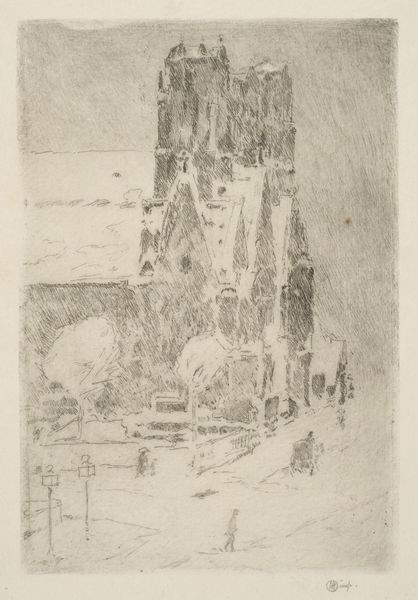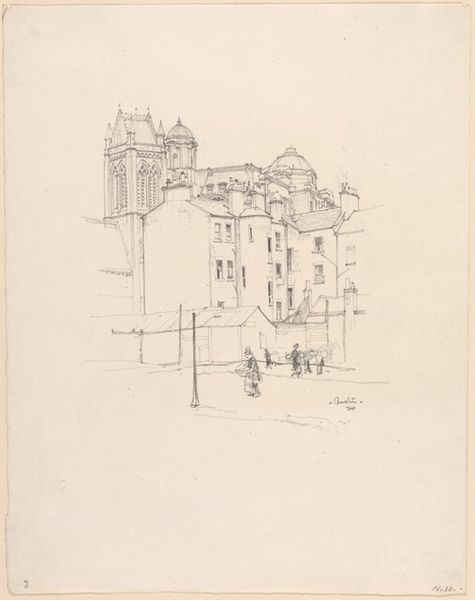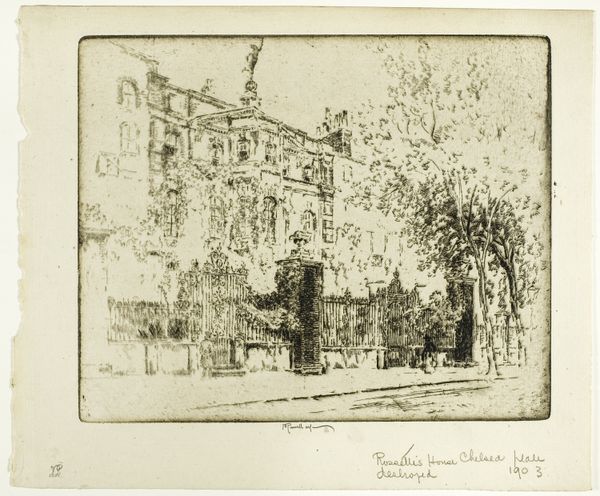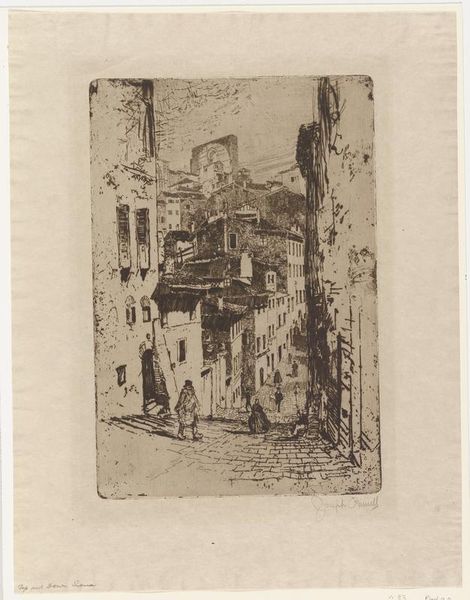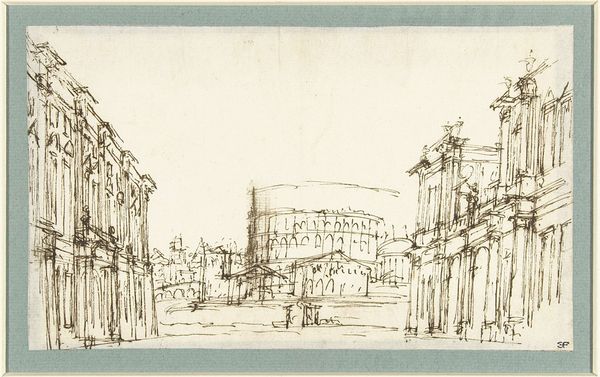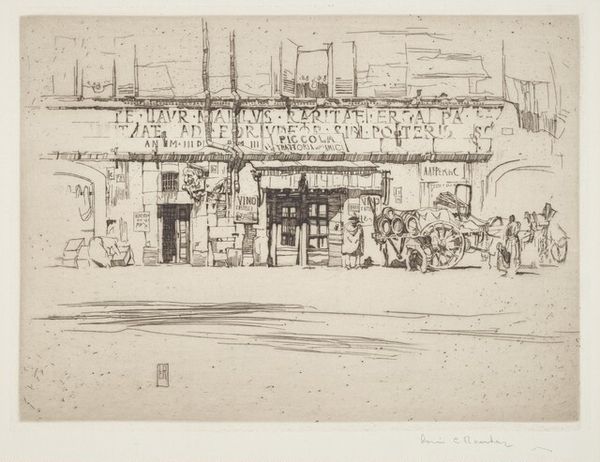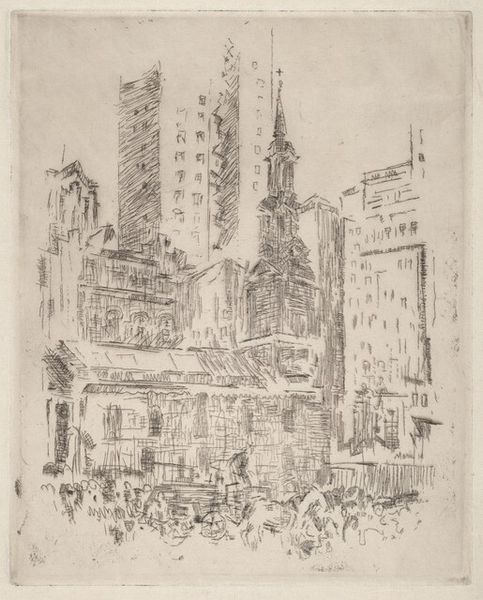
graphic-art, print, etching
#
graphic-art
# print
#
etching
#
etching
#
cityscape
#
modernism
#
realism
Dimensions: 8 x 9 7/8 in. (20.32 x 25.08 cm) (plate)10 5/16 x 13 5/8 in. (26.19 x 34.61 cm) (sheet)
Copyright: No Copyright - United States
Curator: Here we have Joseph Pennell's "Second and Pine Streets," an etching created around 1920. The artwork resides here at the Minneapolis Institute of Art. Editor: It's ghostly, isn't it? Almost like a faded memory, or an echo of a place that once was. The lack of strong contrasts makes it feel like looking through a veil. Curator: The perspective invites us right into the street. What symbols stand out to you in this cityscape? The building architecture hints at the growth of commerce and the density of urban life in the early 20th century. Editor: The street seems dominated by tall structures that block the sun and crowd people at ground level. See how Pennell varies his line weight to simulate the three-dimensionality of architectural form, even suggesting planes of light and shadow? Curator: I'm also drawn to the figures; they feel archetypal, their details blurred, like ghosts haunting their own daily routines. It tells us a story about humanity lost amidst towering structures. The composition invites you to consider how the development of our cities affects society. Editor: The mood evoked by this artwork is quite haunting, an overwhelming urban expanse pressing on people in their limited zones on the streets. This effect is intensified by the atmospheric quality, as if viewing a photograph or memory through some strange sepia filter. Curator: This etching resonates deeply. Perhaps the subdued quality prompts reflection, the city's grandness alongside a fragile reminder of the people who animate the urban core. It suggests a connection to the past. Editor: Absolutely, it captures a precise moment and sentiment in the development of the urban experience. It speaks of a psychological toll in our relationship with the architectural. I'll leave our listeners to consider the structural and tonal qualities as indicators of our early anxieties.
Comments
No comments
Be the first to comment and join the conversation on the ultimate creative platform.

